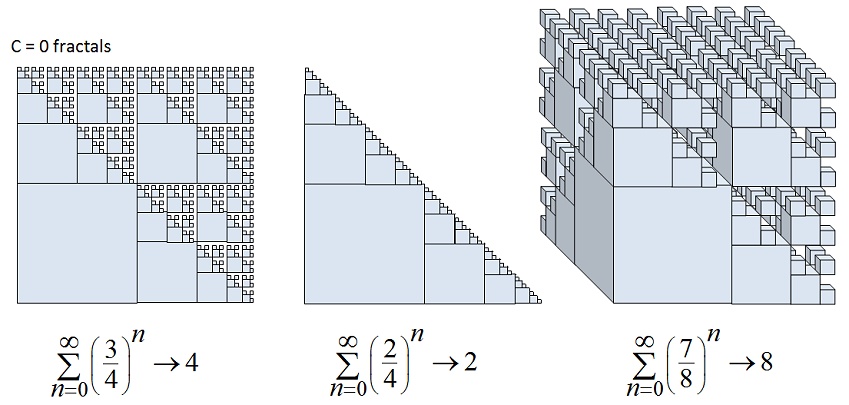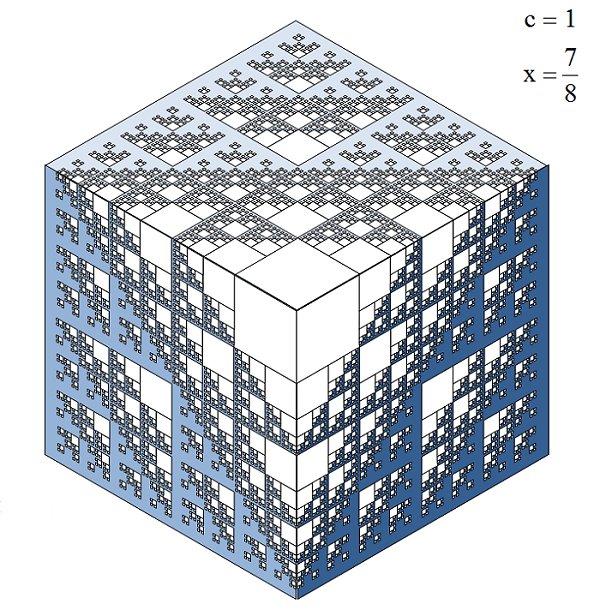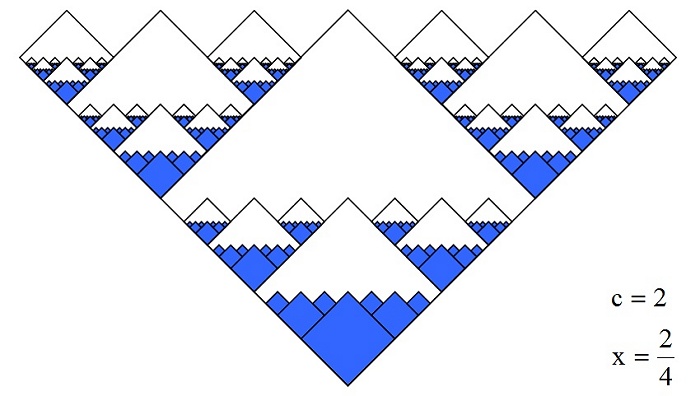|
The J,N & J Equation - The Sums of Convergent Fractal-fractal Geometric Series. 2014.
|
||
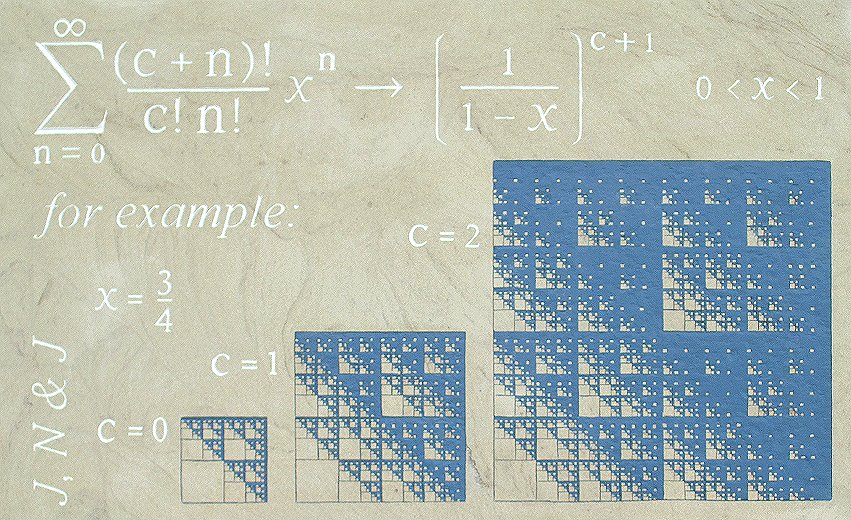 |
||
|
 An equation which turns out to be a special case of the J,N & J equation for when C = 0.  The left- hand side of the equation describes the complex convergent geometric sums of fractional areas, and the right-hand side describes the limiting areas of the space filling fractals that the sums equate to. All of these series are convergent - the greater C or X are, the slower the series converges to its limit. If you are interested in finding out more about fractal-fractals, please read on ............................. |
||
|
Fractals, fractal-fractals, fractal-fractal-fractals and so on. |
||
|
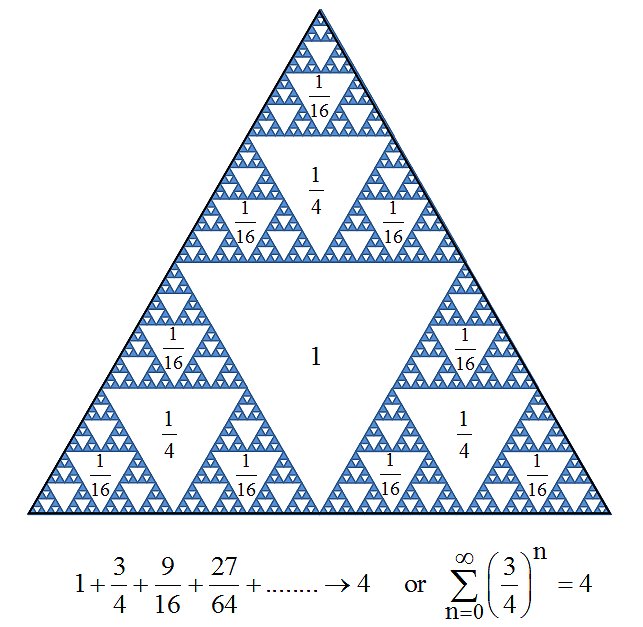 - since the area of the resulting fractal is four times the area of the largest triangle in the series. We can think about it as the addition of an infinite number of variously sized equilateral triangles to create a bigger equilateral triangle. Suppose we replaced all the variously sized little triangles with Sierpinski gaskets of the same size: 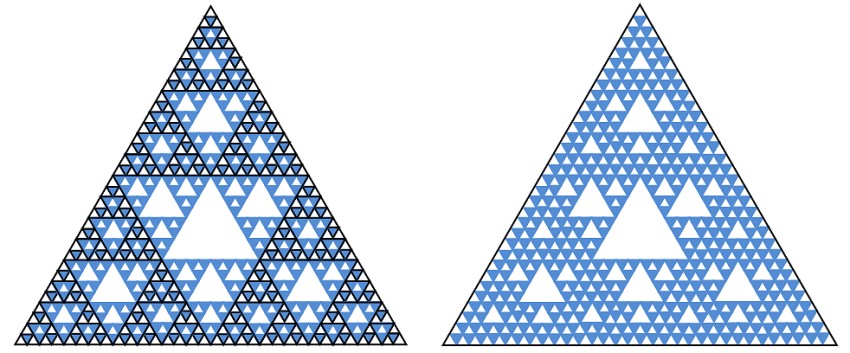 The resulting ‘fractal-fractal’ is a geometric demonstration of the sum of a more complex convergent geometric series, 
- since the area of the resulting fractal-fractal is now 16 times the area of the largest triangle at its centre. Since a fractal can be used as the building block to construct a more complex fractal-fractal, the fractal-fractal can itself be used to construct a fractal-fractal-fractal, and so on ad infinitum; but what complex geometric series will they represent? – and would it be possible to generalise the results?  Jim Granger, Natalie Parazhang and I got together to try to answer these questions while we were undergraduates in 2001. |
||
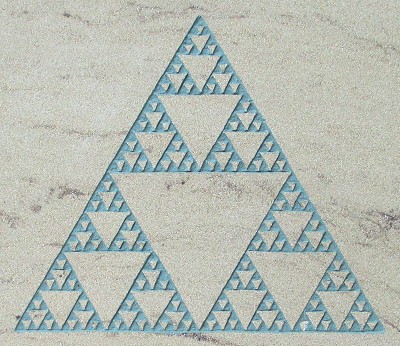 |
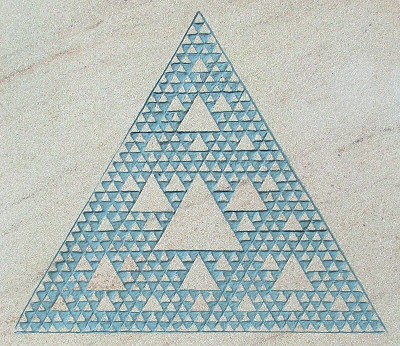 |
|
|
Sierkinski’s Gasket, 2014, 42cm by 42cm.
|
Fractal-fractal, 2014, 42cm by 42cm.
|
|
|
|
||
|
|
||
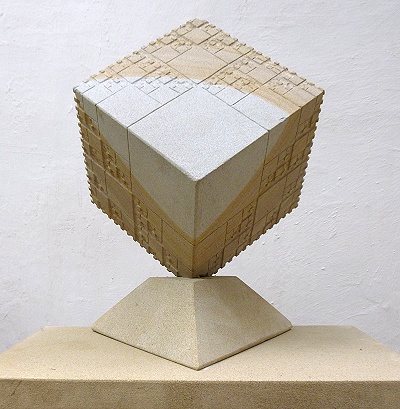 |
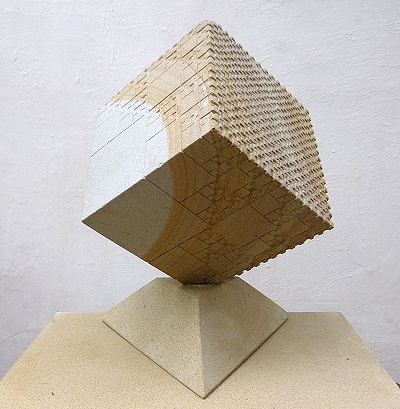 |
|
|
Fractal Cube. 2014. Engraved 8" fine grained sandstone cube.
|
||
|
|
||
| fractal, F0 | fractal-fractal, F1 | |
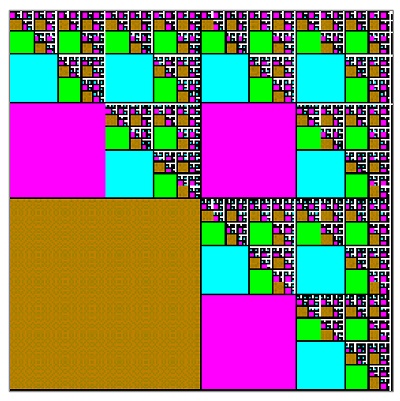 |
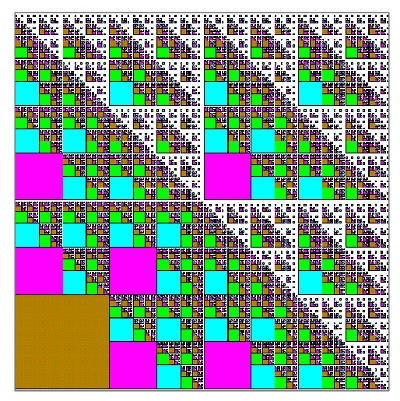 |
|
|
fractal-fractal-fractal, F2
|
fractal-fractal-fractal-fractal, F3
|
|
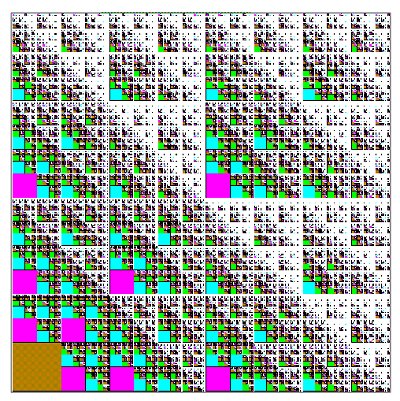 |
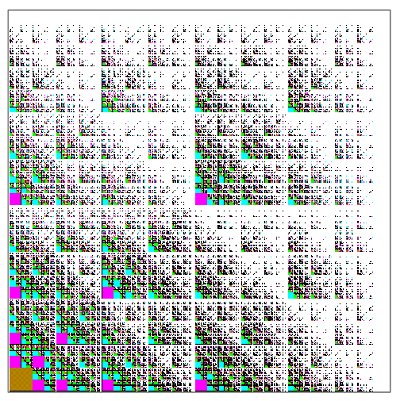 |
|
|
Jim colour-coded the different sized squares to make them easier to count to analyse the series. I was able to generalise the results by considering similar fractal-fractals where C = 1 & 2 and X = 2/4 & 7/8, as well as a certain amount of algebraic pattern spotting and guesswork.
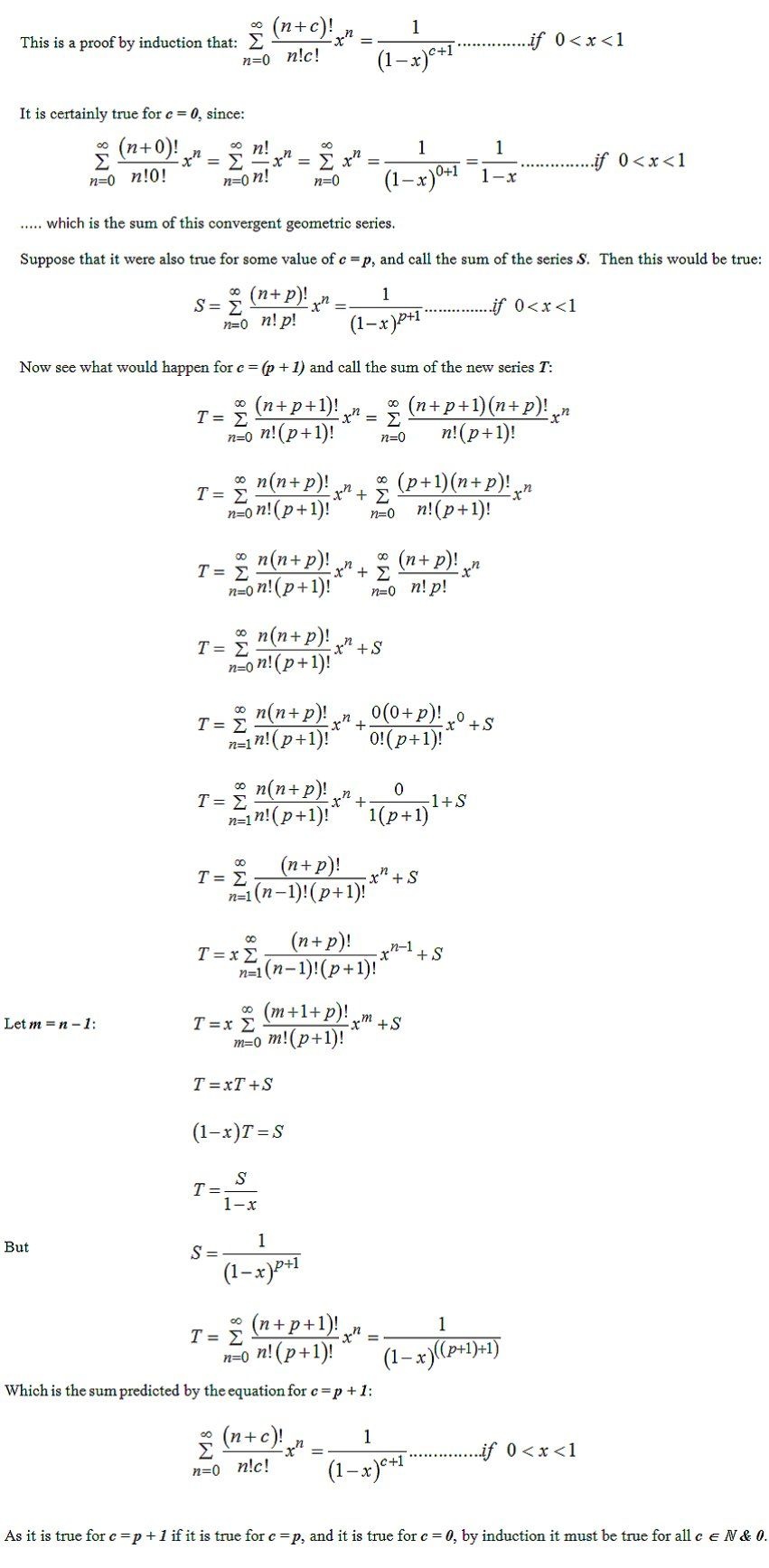 1 MILNER, J. PARAZHANG, N & GRANGER, J. 2001. Philosophy and Practice of Mathematics & Proof in the 20th & 21st Centuries. The Fractal-fractal and the JNJ Theorem. Unpublished paper. Sheffield Hallam University, UK. |
||
|
|
||
|
 The JNJ equation is also the sum of various numbers of different orders of differentiated geometric series, and so these series can be derived from the equation without the use of calculus. For example, if C = 1:  if C = 2:  And so, all the sums of differentiated geometric series can be derived algebraically from the JNJ equation  However, the method of using calculus to find the sums of these series is less long-winded. |
||
|
|
||
|
 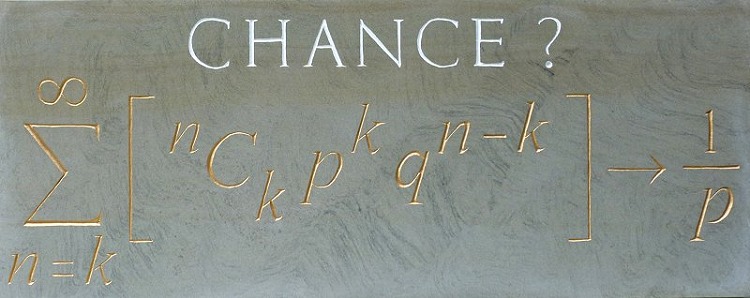 |
||
|
|
||
